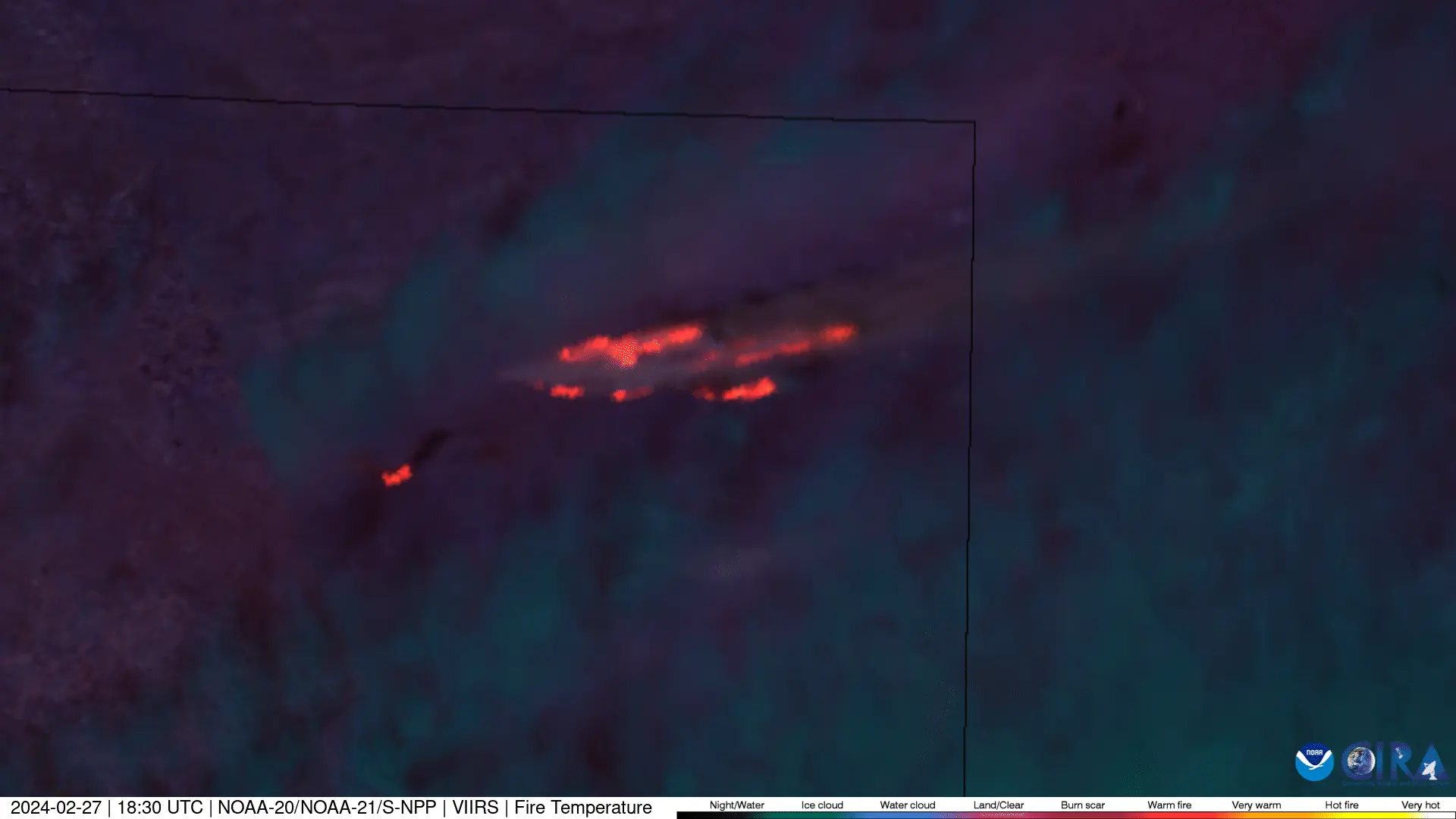The Largest Wildfire in Texas History Is Raging. Here’s What You Need to Know
More than one million acres of land have been engulfed in the Smokehouse Creek Fire, placing it among the largest blazes to ever strike the U.S.
:focal(1980x1490:1981x1491)/https://tf-cmsv2-smithsonianmag-media.s3.amazonaws.com/filer_public/27/2b/272bf11d-6e84-47f0-bf90-f3514eda486b/ap24059728407188.jpg)
Earlier this week, wild flames broke out and swept across the arid Texas Panhandle, aided by gusty winds, low humidity and extreme heat across the state that brought temperatures 20 to 30 degrees Fahrenheit hotter than February averages.
Dubbed the “Smokehouse Creek Fire,” the blaze quickly spread near the city of Amarillo and its adjacent counties in the panhandle—a region where 85 percent of the state’s cattle are raised—and merged with another nearby blaze. Engulfing more than one million acres of land, it quickly became the “largest and most destructive fire in the state’s history,” wrote the West Odessa Volunteer Fire Department on Facebook.
And it’s continued to set records up in smoke: After merging, the blaze is now among the Lower 48’s largest wildfires since modern records began in the 1980s, and it has earned a place among the country’s largest fires ever.
“It was brutal,” Dylan Phillips, a resident of Stinnett, Texas, tells the Associated Press’ Sean Murphy and Jim Vertuno. “The street lights were out. It was nothing but embers and flames.”

For much of this week, first responders—many of whom were volunteers—could contain only 3 percent of the fire as conditions were ripe for movement and spread. Homes, power lines and lamp posts were charred. “It was moving as fast as you could navigate the ground,” Jacob Clifton, the volunteer fire chief in Skellytown, Texas, tells the Texas Tribune. “It’s very hard to use traditional tactics.”
Approximately 400 personnel, including 78 from out of state, have been deployed to the fires. Texas Governor Greg Abbott authorized the emergency use of 94 additional state firefighters, more than 33 fire engines and six air tankers.
A sudden cold front on Thursday brought snow and rain to the area, which helped the responders contain much more of the Smokehouse Creek blaze. But there is still work to be done. “The question is how much of the fire gets contained before Saturday,” Samuel Scoleri, a meteorologist with the National Weather Service in Amarillo, tells the Texas Tribune. “Because we are expecting another round of critical fire weather.”
Chase Helton shared this video with us from the Wheeler Volunteer Fire Department fighting the wildfires. pic.twitter.com/VxnXCBKmL2
— KFDA NewsChannel10 (@NewsChannel10) February 29, 2024
In addition to Smokehouse Creek, several other fires have ignited and burned across the Texas Panhandle. As of Friday afternoon, the Windy Deuce Fire has burned 142,000 acres and is 50 percent contained, and the Grape Vine Fire has burned 30,000 acres and is 60 percent contained. The nearby Magenta Fire had burned 3,300 acres and was 85 percent contained as of Thursday night.
The destruction has been significant across these blazes. Two people were killed by the Smokehouse Creek Fire after being surrounded by flames, with nowhere to go. More than 100 miles of power lines have been burnt, leaving many without the electricity required to participate in the boil-water advisories issued throughout northern Texas. Even in Oklahoma, where the Smokehouse Creek Fire jumped earlier in the week, more than one dozen homes have been destroyed, reports CNN.
“Where the fire was, I figured I was alright,” Jerry Harrah, a resident of Fritch, Texas, tells CBS News’ Li Cohen. “Until I turned around, and it was right across the street from me. And I got burned trying to get out of there.”
The Smokehouse Creek fire and others merged into the second largest fire in Texas's history over the course of the last two days.
— CIRA (@CIRA_CSU) February 28, 2024
The fires are highlighted in white, while clouds are dark grey or blue. pic.twitter.com/O8YvPvY1Qy
Experts say that the fires have been exacerbated by global warming, which is driving extreme, unpredictable weather. No longer contained within an expected season, wildfires in Texas “have become a year-round threat,” Yongqiang Liu, a meteorologist at the U.S. Forest Service’s Southern Research Station, tells the New York Times’ Delger Erdenesanaa and Christopher Flavelle.
“Thinking in terms of the context of climate change, what we’ve seen happening over the last decade or so, there’s certainly an increase [in] fires,” Ben Kirtman, director of the National Oceanic and Atmospheric Administration Cooperative Institute for Marine and Atmospheric Studies at the University of Miami, tells the Texas Tribune. “There’s no question about it.”
This change is affecting residents’ pocketbooks, too. With drought and wildfire becoming more destructive in the state, insurance rates for Texas homeowners rose by 53.6 percent between 2019 and 2023, per the New York Times.
Looking ahead, even with Thursday’s progress, a dry and warm weekend forecast could pose a potentially dangerous challenge for residents and firefighters. “I don’t want the community there to feel a false sense of security that all these fires will not grow anymore,” Nim Kidd, chief of the Texas Division of Emergency Management, tells the AP. “This is still a very dynamic situation.”
/https://tf-cmsv2-smithsonianmag-media.s3.amazonaws.com/accounts/headshot/ChristianThorsberg_Headshot.png)
/https://tf-cmsv2-smithsonianmag-media.s3.amazonaws.com/accounts/headshot/ChristianThorsberg_Headshot.png)